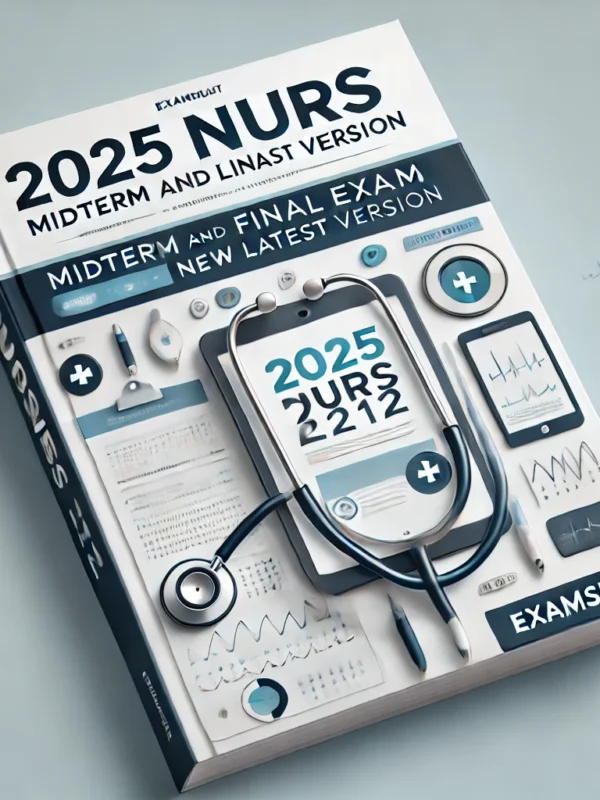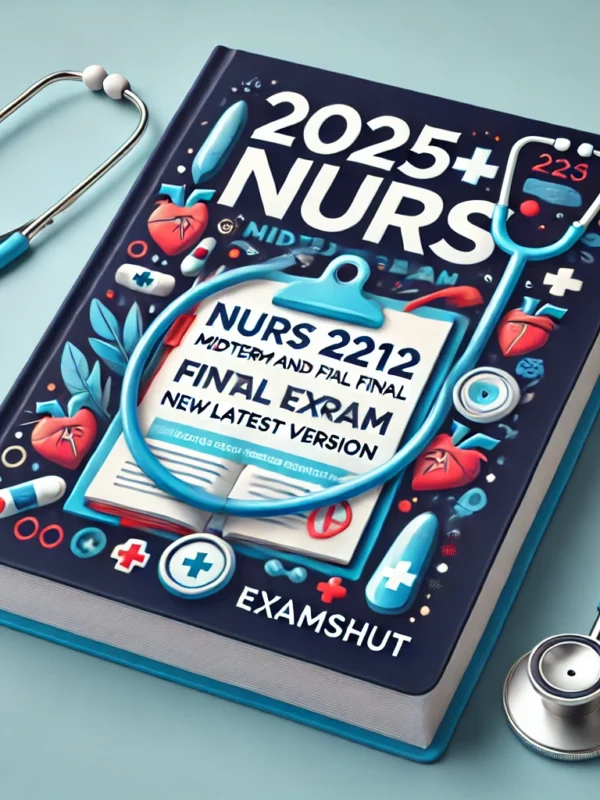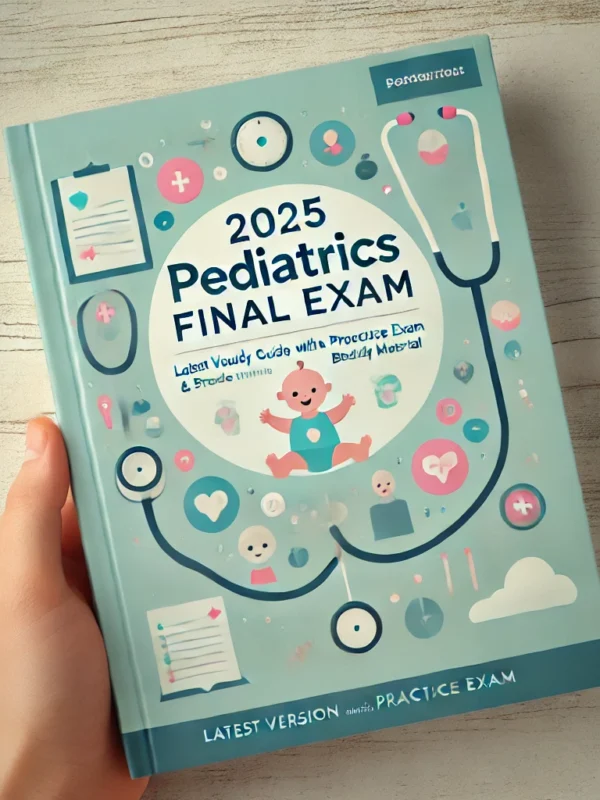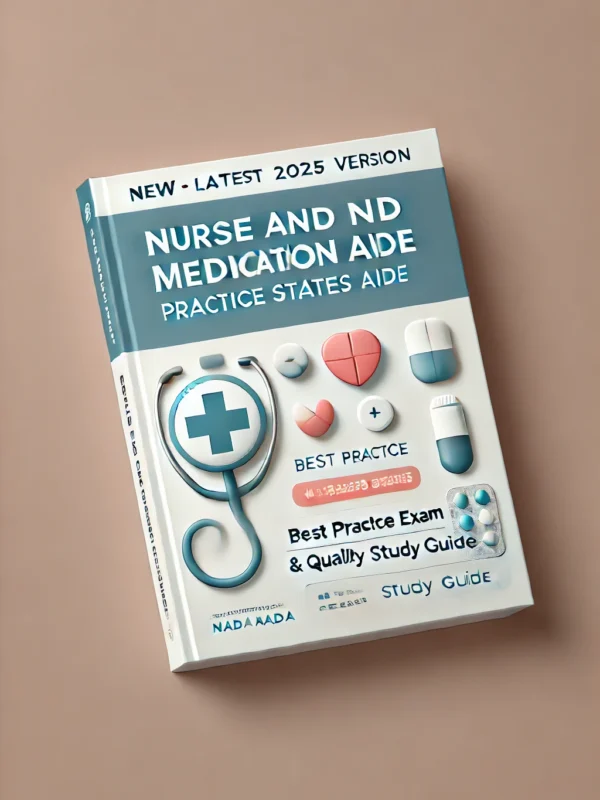The 2025 NURS 226 ATI Practice Exam With 70 Questions: Comprehensive Study Guide and Top-Rated Practice Questions for Nursing Students is a premier study tool crafted for nursing students preparing for the NURS 226 ATI exam in 2025. This resource includes 70 top-rated, Next Gen NCLEX (NGN)-style questions, such as case studies, drag-and-drop, and multiple-response items, covering foundational nursing concepts like patient safety, infection control, pharmacology, and nursing fundamentals. Key topics include calculating safe medication dosages (e.g., IV drip rates), prioritizing care using the ABC framework (airway, breathing, circulation), managing pressure injuries, and implementing proper hand hygiene protocols. Each question comes with detailed rationales, explaining clinical reasoning—for instance, why a nurse should elevate the head of the bed to 30 degrees for a patient at risk of aspiration, or the correct sequence for donning PPE in a contact precaution scenario. Aligned with the latest ATI test blueprint, this comprehensive study guide also offers test-taking strategies, time management tips, and insights into the NCSBN Clinical Judgment Measurement Model (NCJMM), helping students build confidence, master essential skills, and excel in both the NURS 226 exam and NCLEX preparation, paving the way for success in their nursing education and clinical practice.
Preview
1. A nurse is caring for a client who needs a stool specimen collected. Which of the
following actions should the nurse take when obtaining the specimen?
A. Use a sterile swab to obtain the specimen
B. Place the specimen in a sterile container
C. Label the paper bag in which the specimen container is placed
D. Send the specimen container immediately to the lab
Correct Answer: D. Send the specimen container immediately to the lab
Rationale: It is essential to send the stool specimen to the lab promptly to prevent
degradation and ensure accurate testing. Immediate transportation ensures that the
specimen is processed without delay.
2. A nurse is caring for an older adult client. The nurse informs the client that straining
while defecating can cause which of the following?
A. Dilated pupils
B. Dysrhythmias
C. Diarrhea
D. Gastric ulcer
Correct Answer: B. Dysrhythmias
Rationale: Straining during defecation can stimulate the vagus nerve, leading to changes in
heart rate and potentially causing dysrhythmias. This is especially important in older
adults, as they are more susceptible to cardiac issues.
3. A nurse is preparing to administer a soapsuds enema to an adult client. Which of the
following actions should the nurse take?
A. Put on sterile gloves
B. Assist the client to the left Sims’ position
C. Hang the enema container 60 cm (24 in) above the anus
D. Insert the tubing about 15 cm (6 in) into the anus
Correct Answer: B. Assist the client to the left Sims’ position
Rationale: The left Sims’ position helps facilitate the enema solution’s flow into the colon
by promoting the correct anatomical alignment of the rectum and sigmoid colon,
enhancing the effectiveness of the procedure.
4. A nurse is preparing to administer penicillin IM to an adult client. Which of the
following angles should the nurse use for injection into the client’s ventrogluteal
muscle?
A. 45 degrees
B. 60 degrees
C. 75 degrees
D. 90 degrees
Correct Answer: D. 90 degrees
Rationale: The correct angle for administering an intramuscular injection into the
ventrogluteal muscle is 90 degrees to ensure the medication is delivered deep into the
muscle and not into subcutaneous tissue.
following actions should the nurse take when obtaining the specimen?
A. Use a sterile swab to obtain the specimen
B. Place the specimen in a sterile container
C. Label the paper bag in which the specimen container is placed
D. Send the specimen container immediately to the lab
Correct Answer: D. Send the specimen container immediately to the lab
Rationale: It is essential to send the stool specimen to the lab promptly to prevent
degradation and ensure accurate testing. Immediate transportation ensures that the
specimen is processed without delay.
2. A nurse is caring for an older adult client. The nurse informs the client that straining
while defecating can cause which of the following?
A. Dilated pupils
B. Dysrhythmias
C. Diarrhea
D. Gastric ulcer
Correct Answer: B. Dysrhythmias
Rationale: Straining during defecation can stimulate the vagus nerve, leading to changes in
heart rate and potentially causing dysrhythmias. This is especially important in older
adults, as they are more susceptible to cardiac issues.
3. A nurse is preparing to administer a soapsuds enema to an adult client. Which of the
following actions should the nurse take?
A. Put on sterile gloves
B. Assist the client to the left Sims’ position
C. Hang the enema container 60 cm (24 in) above the anus
D. Insert the tubing about 15 cm (6 in) into the anus
Correct Answer: B. Assist the client to the left Sims’ position
Rationale: The left Sims’ position helps facilitate the enema solution’s flow into the colon
by promoting the correct anatomical alignment of the rectum and sigmoid colon,
enhancing the effectiveness of the procedure.
4. A nurse is preparing to administer penicillin IM to an adult client. Which of the
following angles should the nurse use for injection into the client’s ventrogluteal
muscle?
A. 45 degrees
B. 60 degrees
C. 75 degrees
D. 90 degrees
Correct Answer: D. 90 degrees
Rationale: The correct angle for administering an intramuscular injection into the
ventrogluteal muscle is 90 degrees to ensure the medication is delivered deep into the
muscle and not into subcutaneous tissue.











Reviews
There are no reviews yet.